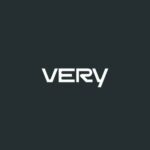SUN Automation Group® is a global leader in providing corrugated machinery and box plants with solutions for feeding, printing, and converting. With Industry 4.0 on the horizon, SUN knew that its products would need to support new features like data telemetry, diagnostics, and predictive maintenance, but they didn’t have the internal resources to build out these cutting-edge tools quickly.
By teaming up with Very, SUN was able to develop Helios, a hardware and software edge computing solution that collects machine data, facilitating analysis and understanding of machine health. The solution accomplishes this through rich data displays, anomaly detection, and issue reporting.
The Challenge
Things are changing in the corrugated manufacturing industry. With high-quality operators and maintenance workers retiring or migrating to other industries, corrugated manufacturers are finding that those employees are taking their deep tribal knowledge about the factory machinery with them. Companies need a way to understand and reliably predict machine health in a scalable, sustainable way — now and in the future.
As a top-tier supplier of corrugated machinery to factories around the world, SUN wanted to build a cutting-edge solution that could solve this problem for their customers as well. They also needed to be able to go to market quickly to gain an advantage over third-party offerings.
To do this, Matthew Miller, SUN’s Director of Technology and a former technology leader at GE, was looking for an expert development partner with experience in machine learning. While he found many vendors who were capable of building an IIoT platform, they weren’t able to incorporate the crucial anomaly detection software element. Additionally, as a certified scrum master himself, Matt wanted to work with an agile team.
After seeing a list of the distinguished clients Very has worked with and hearing about our agile and machine learning expertise, Matt took a meeting with our solutions architecture team.
“From the first meeting, I was impressed with Very’s process and skills. They were able to dig in quickly to the nuts and bolts of the project.”
Matthew Miller, SUN’s Director of Technology
The Process
We began the SUN Automation project, as we always do, with a Technical Design Sprint where we asked critical questions about the product we were tasked with building: who are the product users, and what matters most to them?
Our research showed that SUN’s customers wanted a solution that would give them real-time insights into machine health, as well as the ability to understand how the machines are performing over time through aggregate metrics. The product also needed to meet the needs of SUN admin users and provide them with full control of the system, including the ability to add users, customers, and machines, manage firmware, customize alerts, and use the API.
While SUN had already completed a financial analysis to understand how the product might perform in the market, this additional research helped SUN and Very to ensure that the product meets the needs of potential customers. SUN was also able to apply some of the research techniques we introduced, such as a customer questionnaire, to their other R&D and product development efforts.
“What Very brings to the table are those soft skills and the ability to help you through the strategic pieces of your project,” Matt says. “That’s something I’ve never found with any firm that I’ve dealt with before, and I’ve definitely dealt with a lot of firms.”
After completing this critical step, we followed our agile IoT process to complete the build. The product includes an edge computer that queries existing machine PLCs for relevant data through CIP over EtherNet/IP. That data is sent to a cloud backend which includes services for machine learning, databases for application data and long-term storage, and a web application with a responsive UI where users can consume information regarding their corrugated converting equipment.
For the crucial machine learning piece, we focused on anomaly detection and aggregate measures. Once we collected enough data from the PLC, we were able to design machine learning models that can detect anomalous behavior in converting machines.
The tech stack for each piece breaks down as follows:
- Firmware: Nerves and NervesHub for the gateway device
- Hosting: AWS
- Data pipeline: AWS IoT, AWS Lambda, and AWS Kinesis Firehose — all coordinated through a Serverless framework
- Data storage: Application data stored in AWS RDS, with long-term storage in AWS S3
- Web application: Phoenix framework and React for front end
The Results
Just over 5 months after beginning the project, Very delivered a robust anomaly detection solution for SUN, and it’s already live in beta with their customers. The product gives SUN a competitive advantage and paves the way for the future development of advanced anomaly detection models with predictive maintenance.




 Contact Company
Contact Company



